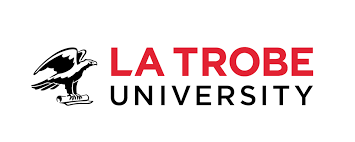La Trobe University: Protecting abalone from deadly threat
Funded by a significant grant from Fisheries Research and Development Corporation (FRDC) and the Australian Abalone Growers Association, the study will trial vaccination strategies on Victoria’s three largest abalone farms – Southern Ocean Mariculture, Yumbah and Jade Tiger Abalone.
The study is being led by Associate Professor Karla Helbig and Professor Travis Beddoe, both from La Trobe University.
Associate Professor Karla Helbig said recent developments in scientists’ understanding of how abalone fight viruses have opened the door to a potential vaccination strategy.
“Invertebrates like abalone don’t have the ability to make antibodies. It was previously thought that they don’t have immune memory at all. However, we know now that is not entirely true – which is a significant breakthrough in the development of a vaccine,” Dr Helbig said.
Dr Helbig said researchers are coupling this knowledge with their awareness of a unique method of protection found in many invertebrate species, including abalone, to trial a new vaccine.
“Many vertebrate species can offer protection to their offspring against some viral infections if they themselves have been in contact with the virus – a phenomenon that we call ‘transgenerational immune priming.’ This is now known to occur in invertebrates too,” Dr Helbig said.
“We’re using this knowledge to trial an RNA vaccine – which, if successful, may be a game-changer for the industry.”
Dr Helbig said, after suffering major herpesvirus outbreaks in 2005 and 2021, and the effects of COVID, the industry has been through some challenging times.
“The Australian abalone industry exports $140 million each year, and is a major employer in many regional communities across the country,” Dr Helbig said.
“Now that we have this knowledge about abalones’ immune memory, and a potential vaccination strategy, it’s vital that we trial it, and do all we can to protect the industry.”
General Manager at Southern Ocean Mariculture and Chair of the Abalone Growers Association, Mark Gervis said farmers welcomed research into preventing this deadly virus.
“When our entire farm was wiped out in a 2005 herpesvirus outbreak, the financial and employment outcomes were completely devastating,” Mr Gervis said.
“Breeding and farming abalone is a three to four-year process, so if the stock is killed, then it is a long road to re-build.
“The most recent outbreak has us on high-alert – especially after a couple of hard years with export issues due to COVID. If successful, this vaccine will be a huge win for the species and the industry.” Mr Gervis said.
With a near 100 per cent mortality rate, abalone herpesvirus first appeared in Victoria in 2005, when an outbreak caused extensive death of both farmed and wild abalone.
After many years of rebuilding, the virus was thought to have disappeared until it re-surfaced off the south-west coast of Victoria last year. Though the virus is contained, the researchers say there is a high risk that it could move from where it is active or re-appear in other sites at any time.

